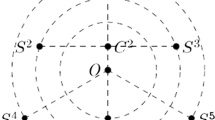Abstract
A high-speed computer sieve used to count composite numbers in their various linear forms is described. A detailed description of the algorithm as well as a brief mention of the mechanics of the computer program is included. Actual number counts of classes of composite numbers in the integers to 2,000,000 are included together with an indication of the number theoretical significance of the counts.
Similar content being viewed by others
References
Chebyshev, P.: Lettre de M. le professeur Tchebychev à M. Fuss, sur un nouveau theorem relatif aux nombres premiers daps les formes 4n+1 et4 n+ 3. Oeuvres1, 697 (1899).
Landau, E.: Handbuch der Lehre von der Verteilung der Primzahlen. V. 2., New York: Chelsea Publishing Co. 1953.
Ore, O.: Number theory and its history. New York: McGraw-Hill Book Company, Inc. 1948.
Ryan, J. T.: One more “Many-More” assertion. American Mathematical Monthly74, 19 (1967).
Shanks, D.: Quadratic residues and the distribution of primes. Mathematics of Computations13, 272 (1959).
Author information
Authors and Affiliations
Rights and permissions
About this article
Cite this article
Ryan, J.T. A sieve method for classifying composite numbers. Numer. Math. 10, 324–326 (1967). https://doi.org/10.1007/BF02162031
Received:
Issue Date:
DOI: https://doi.org/10.1007/BF02162031




